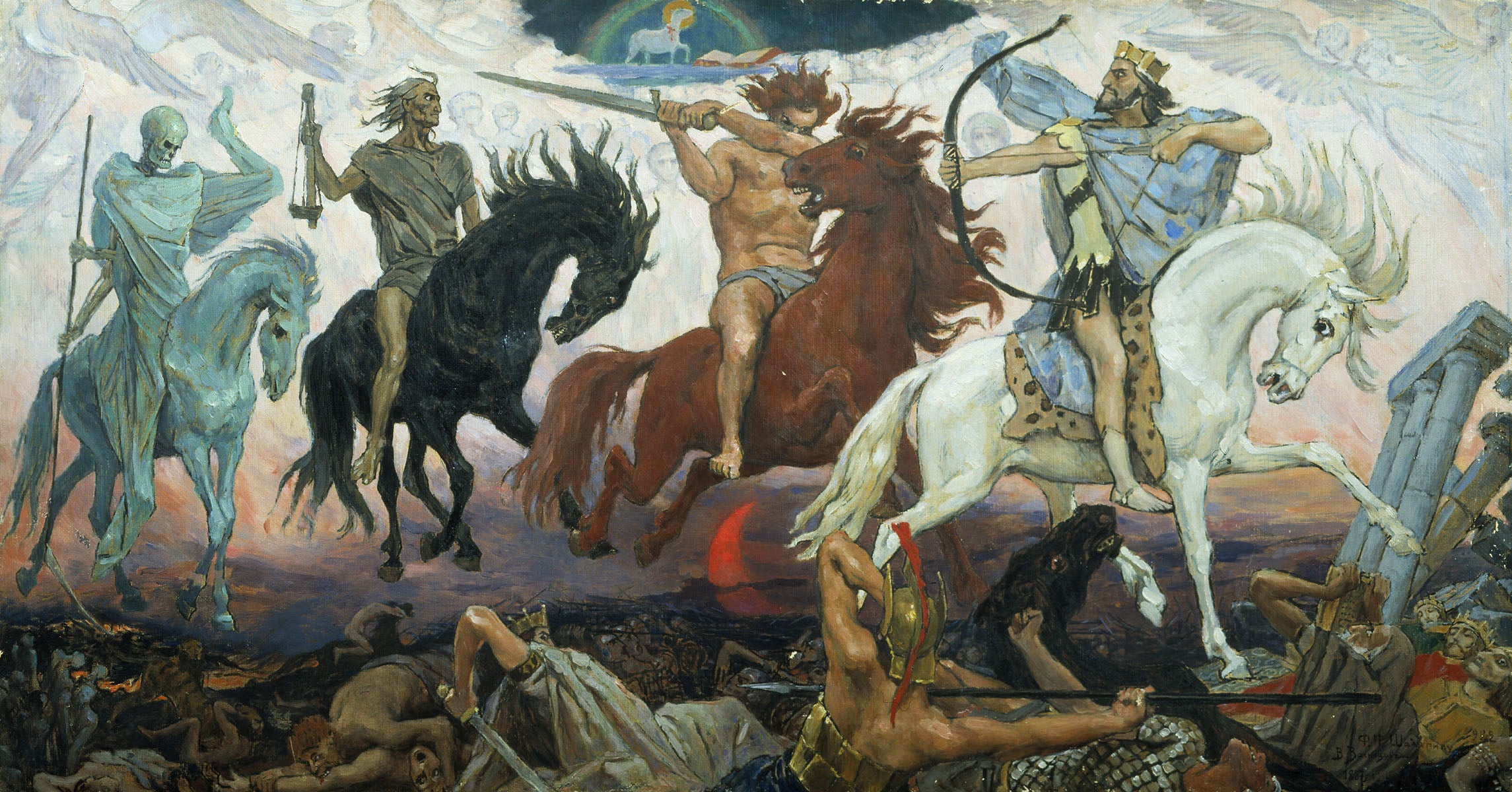Home | Textual Glossary | Design Hub | Rehearsal Blog | Artistic Influences | Ask the Dramaturgs | Sounds in Unity
Act One
PXI (Prologue)
"The sound of a threshing machine"
- Threshing machine: a power-driven machine for separating the grain from corn or other crops.
Diagram of how a thresher works
"...boys from Ontario who had left to escape conscription..."
- Conscription: The compulsory enlistment of civilians for military service. Conscription began in Canada in 1917 when the Military Service act became law.
P2
"At the Unity Telephone and Telegraph office, two women sit side by side at the plugboard"
- Telephone and Telegraph office:
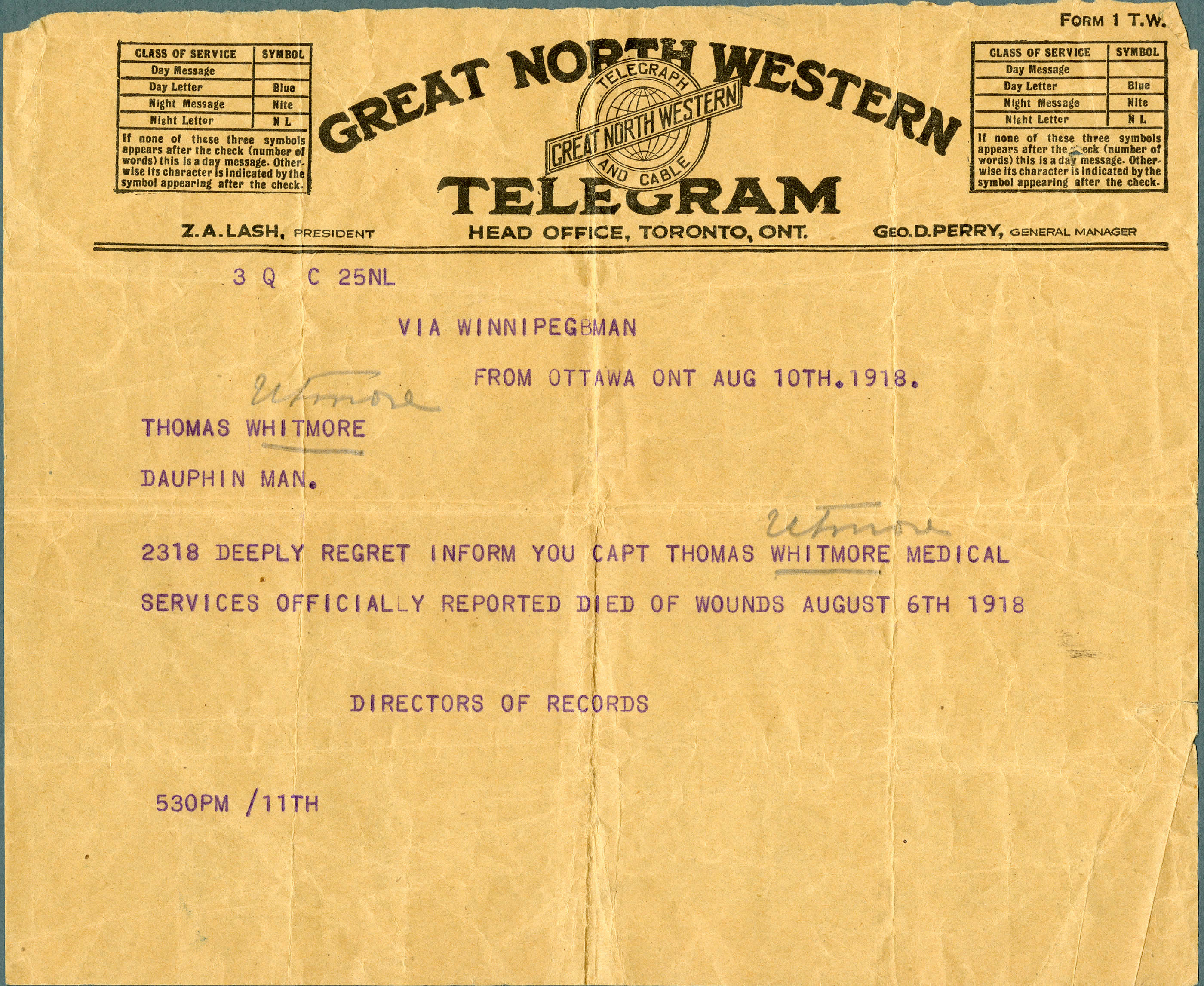
P4
"a black-ribboned envelope"
- From the Hub's Home Front page:
-
In the late part of the 19th Century and early part of the 20th Century mourning rituals were specific and prevalent to society. One such aspect of mourning encouraged by this cultural phenomenon was the use of black ribboned envelopes.
"The Victorians marked loss with postmortem photography (posing the dead to look alive to peaceful), keepsake mementos (e.g. a lock of hair turned into a piece of jewelry), extravagant funerals, and death notices."
The use of black ribbons on envelopes had a two-fold purpose: on the one hand it notified friends and family of the death of a loved one. It also ensured that the letter would remain private and protected from rain and snow.
Sometimes black ribbons were unavailable or too extravagant for certain classes of family, a suitable substitute would be the ues of black wax as a seal.
P18
"I could be the woman in the painting, leading the army, you know"
- Woman in the painting: An allusion to the painting "Liberty leading the People", by Eugene Delacroix (below).
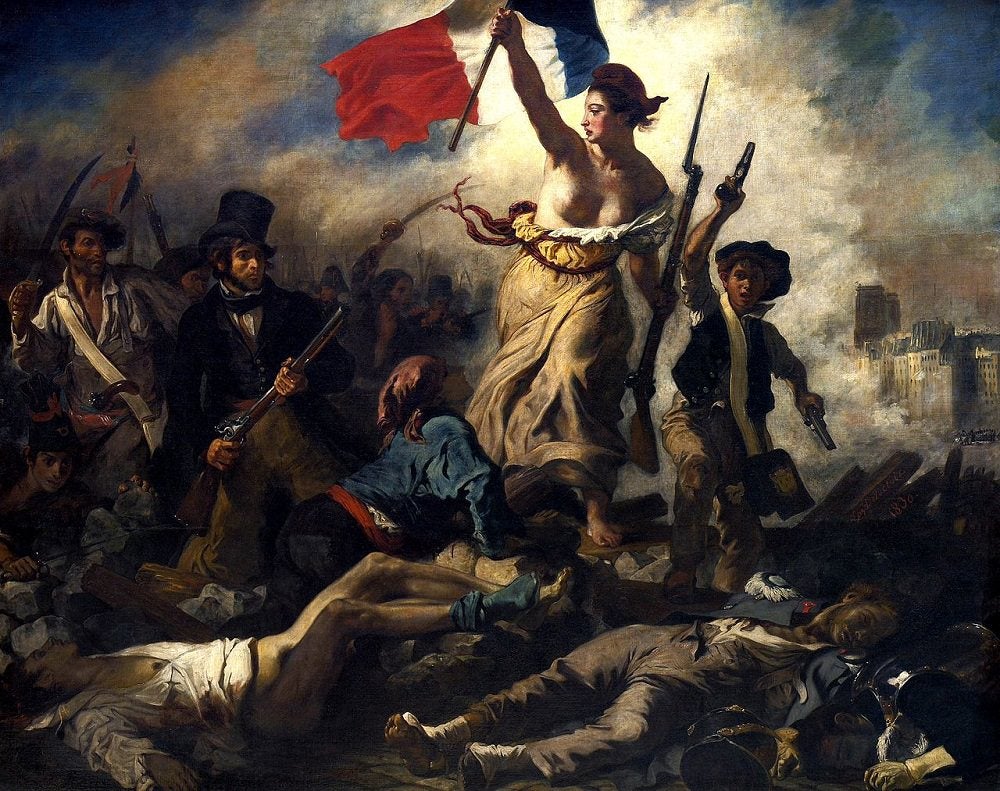
"What are you doing to win the war? Crochet?"
- Crochet: A type of knitting or lacework done with a single hooked needle, usually with cotton or wool thread. The basic structure is the chain, on which stitches and patterns are built. Civilians were encouraged to crochet or knit socks and other garments for soldiers on the front.
P21
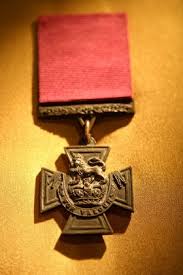
"The Victoria Cross"
- The highest award for conspicuous gallantry, instituted in 1856 during the Crimean War. Unlike most previous honours, it was open to all ranks and unclassified. The ribbon is crimson and the inscription ‘For Valour’ was Queen Victoria's suggestion. 71 Canadians won the Victoria Cross during the First World War, including seven from Saskatchewan.
P25
"It’s one of the Four Horsemen of the Apocalypse”
- The Four Horsemen of the Apocalypse: Biblical figures from the Book of Revelation who signaled the end of days. They appeared as four horsemen representing war, destruction, famine and plague.
Depicted in the 1887 painting by Victor Vasnetsov.
P36
“Mask. That’s also the law.”
- Mask: Public officials, who were unaware that influenza was a virus and that masks provided no real protection against viruses, often demanded that people wear gauze masks. Some cities even passed laws requiring people to wear masks. Enforcing these laws proved to be very difficult as many people resisted wearing masks.
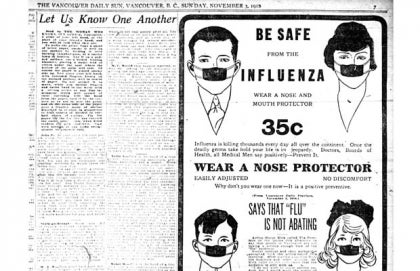
P44
- Harvest process: COMING SOON.
P45
“No, no he got blown up last year when the city exploded”
- Halifax explosion: An explosion that resulted from the accidental collision of a French munitions ship and a Norwegian steamer carrying Belgian relief supplies. It was the largest man-made explosion to take place in an urban centre before Hiroshima.
P46
“Oh it was good enough. ’Cept my feet were always wet and got a little rotten. See them?”
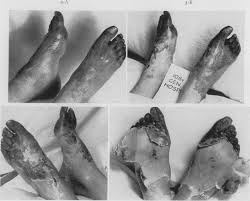
- Trench foot: Caused by having wet feet for a long period, common in WW I trenches. One immersion, followed by 24 hours during which boots were not removed, could be enough to cause it. Symptoms resembled those of frostbite, and there was risk of gangrene: toes or a whole foot might have to be amputated. It caused almost 75,000 hospital admissions, including 41 deaths, among British forces on the western front.
P47
“Know where I was? No, I didn’t even know where I was most of the time. And you couldn’t say if you did. The censors would cut it out with a razor blade.”
- Censors: The censors were looking out for two things in World War I and World War II. They didn't want the soldier to say anything that would be of value to the enemy, such as where they were. They always wanted to camouflage how strong the troops were. "Loose lips sink ships" was the phrase that was very prevalent in WW II and that was the theory in WW I as well. (Fox)
- British Postal Censorship: "PLANS WERE MADE pre-war for censoring mails but they were woefully inadequate so the system got off to a slow start and only gradually extended its coverage. The first neutral countries’ mail was not examined until late August 1914, transit mails in mid-1915 and American mails from late 1915. By the end of 1914 the staff had grown to 230 and by December 1916 to 4,000. In November 1918, while the establishment was nearly 5,700, the actual staff strength was 13·5% short, which resulted in some delays in the work. About 75% of the staff were women. The London censors handled almost all mail subject to censorship until late 1915. From then, the Liverpool office dealt with trans-Atlantic and West African mails. London continued to handle all other terminal mails, transit mails and most of the POW mail. The display shows the labels and handstamps used and a selection of the slips placed in covers by the censors to inform the sender, or the addressee, about the rules for correspondence. These are followed by aspects of the wartime postal services as affected by the rules of censorship, including ‘express censorship’, duplicate letters, shipping documents, philatelic mail, internee and POW mail. Some censorship of inland mail, often prompted by Admiralty concerns, are shown. Correspondence with enemy countries, other than to or from POWs, was permitted through a small number of authorised intermediaries, the best known of which was the Thomas Cook organisation." (17)
P49
"wood comes in from Saskatoon."
- Prairie life: see the Hub's Prairies page and Maps page for insight into life on the Prairies.
P52
“ROSE and DORIS are wearing masks, have camphor sacks around their necks, and are brewing a foul-smelling concoction on the wood stove”
- Homemade flu remedies: Advertisements recommending drugs which could cure influenza filled newspapers. Some doctors suggested that drinking alcohol might prevent infection, causing a run on alcohol supplies. Some folk healers insisted that wearing a specific type of amulet or a small bag of camphor could protect against influenza.
Act 2
P69
“I read that this flu is uh…might be the Germans”
“No really though, some secret weapon they planted on the coast.”
“They can do all sorts of things these days.”
“That poison, uh, gas.”
- Propaganda:Persuasive mass communication that filters and frames the issues of the day in a way that strongly favours particular interests; usually those of a government or corporation. Also, the intentional manipulation of public opinion through lies, half-truths, and the selective re-telling of history.
- Loose lips sink ships: an idiom which meant: don't talk carelessly because you don't know who is listening. (From wartime. Literally, "Don't reveal even the location of a loved one on a ship, because the location could be communicated to the enemy by a spy.")
P70
“Oh, it’s something about that a woman talking is like a dog on its hind legs, or…You know that one?”
- Quoted from Boswell's Life of Johnson: "Next day, Sunday, July 31, I told him I had been that morning at a meeting of the people called Quakers, where I had heard a woman preach. JOHNSON. 'Sir, a woman's preaching is like a dog's walking on his hinder legs. It is not done well; but you are surprized to find it done at all.' "
P83
“And behold a pale horse, and he that sat upon him, his name was death and hell followed him.”
- Book of Revelation: The last book of the New Testament. It is composed of visions of the future and is also known as the Apocalypse (derived from Latin apocalypsis meaning "uncover")
P90
- Armistice Day: The end of the First World War was declared at 11.00am on November 11, 1918, known at the time as the Armistice of Compiègne. This is depicted as a surprise announcement in the play but in reality, as a negotiated peace, it was well known to be coming for some days towards the end of the Allied 'Hundred Days Campaign.' For a country with a population of only 8 million, Canada lost 60,000 killed and another 172,000 wounded: a significant ratio. Information: Reid, Marc Collin, ed, (pxiii)
P104
"How was I to know there was no such place as New Iceland?"
- In fact there is: Manitoba is home to the largest Icelandic population in the world outside of Iceland, and are known amongst the community as Vestur-Íslendingar, which translates to 'Icelanders in the West'.
A Ukrainian family patching up the timber walls of their home in Manitoba, circa. 1905.
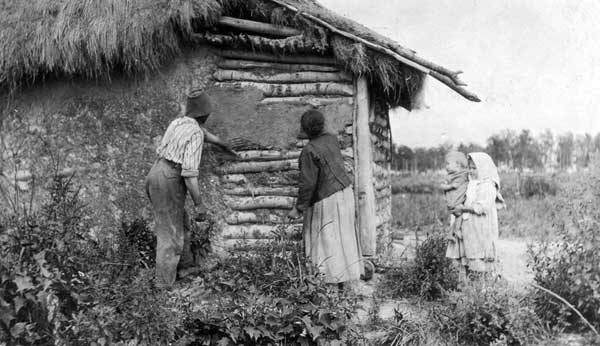
Payne, Michael. "Manitoba History: Commemorating Ethnocultural Communities in Manitoba." Manitoba History: Commemorating Ethnocultural Communities in Manitoba. Manitoba Historical Society, Oct. 2005. Web. 23 Sept. 2015. <http://www.mhs.mb.ca/docs/mb_history/50/commemoration.shtml>.
-
New Iceland - A Forgotten Nordic Colony In Canada
- Linked from here, a dead link. Reproduced cached material.
- When it comes to the discovery and colonization of America, Iceland can claim a longer pedigree than all other European countries. The Icelandic explorer Leif Eriksson (970-1020) was the first European in recorded history to set foot in North America, where he named three areas:
- Helluland (‘Flatstoneland’, probably Baffin Island);
- Markland (‘Woodland’, probably Labrador); and
- Vinland (often translated as ‘Vineland’ but more accurately translatable as ‘Meadowland’, possibly on Newfoundland).
-
The USA celebrates each October 9th as Leif Eriksson Day, although he probably never set foot on what is now US soil.
More speculative, or just plain wrong, are theories that hold that Norsemen penetrated as far inland as Minnesota (where the Kensington Runestone, dated at 1030 but in all likelihood a recent forgery, was long held to be a true artifact of such an incursion) via the Hudson Bay and/or the Great Lakes. It is intriguing, however, that exactly this area of the continent was to be later heavily colonized by Scandinavians. Many Minnesotans are of Scandinavian descent.
A bit further north, there even was a flourishing Icelandic colony that for a while functioned as a semi-independent republic within the still fluid framework of Canadian westward expansion. Nyja Island (‘New Iceland’) was located in the Canadian province of Manitoba, on the western shore of Lake Winnipeg. It was the result of large-scale Icelandic emigration to Canada, especially in the late nineteenth century (in 1875, a volcano on Iceland erupted, exacerbating already precarious living conditions).
The areas of Icelandic settlement covered the area north of Boundary Creek as far north as Hecla Island, with Gimli in the Riverton area the focal point of Icelandic immigration. This was mainly due to the efforts of Sigtryggur Jonasson, an earlier Icelandic migrant, who wrote a pamphlet on behalf of the Canadian government entitled Nyja Island I Kanada (‘New Iceland In Canada’) and went back to Iceland to convince Icelanders to join him across the ocean.
Jonasson was part of an expedition to the north of Manitoba to find a suitable location for the colony. New Iceland had to be isolated, have good soil for farming and be close to a lake, for fishing. The only drawback of the eventual site, 18 miles upstream from the Icelandic River: an abundance of grasshoppers. For his efforts, Jonasson is remembered as the ‘Father of New Iceland’.
The very first Icelandic town in New Iceland was named Gimli, Icelandic for ‘Paradise’. Conditions were far from idyllic, however: low on resources, many colonists didn’t survive the first, harsh winter. The following year, 1876, saw the arrival of the Stóri Hópurinn, the ‘Large Group’ of 1.200 immigrants, swelling the colony’s population to nearly 2.000. At the close of that same year, the colony was ravaged by a smallpox epidemic, killing off as many as 500 colonists and resulting in a quarantine on the whole of New Iceland that lasted until the middle of next year.
In order to help the ailing and despairing colony to survive, a form of self-government was set up, modeled on the Althing back home. The Vatnsthing (‘Lake Parliament’) ruled over four districts:
- Vidinesbygd (‘Willow Point Community’, now the Gimli District);
- Arnesbygd (‘Ames Community’);
- Fljotsbygd (‘Icelandic River Community’, now the Riverton District); and
- Mikleyjarbygd (‘Big Island Community’, now Hecla Island).
-
“The Colony of New Iceland was recognized by the Canadian government as a separate nation with full jurisdiction on immigration, taxation and legal matters,” the website mentioned under comment #2 claims. No evidence of this exists. In any case, emigration continued, however, to better lands as far south as Dakota. In 1881, New Iceland barely counted a hundred inhabitants. The local newspaper folded, the government of New Iceland disbanded itself.
New Iceland fell on better times a few years after the great exodus, when fishing, farming and freighting offered better job opportunities. New Icelandic immigrants set up the towns of Riverton and Arborg (Icelandic for ‘Riverton’). In 1893, New Iceland was almost back to its previous numbers. In 1887, all of New Iceland was incorporated into Manitoba as the Gimli Municipality, thus ending the brief, fledgling existence of the first neo-Scandinavian state on American soil since Leif Eriksson’s brief transatlantic adventure.
In over a century of its existence, Gimli has welcomed a steady trickle of Icelandic immigrants, but also many Ukranian and Native newcomers, lending the tourist town a multicultural ambiance. The Icelanders, in turn, have impressed their identity upon Manitoba; the local university offers courses in Icelandic language and culture.
